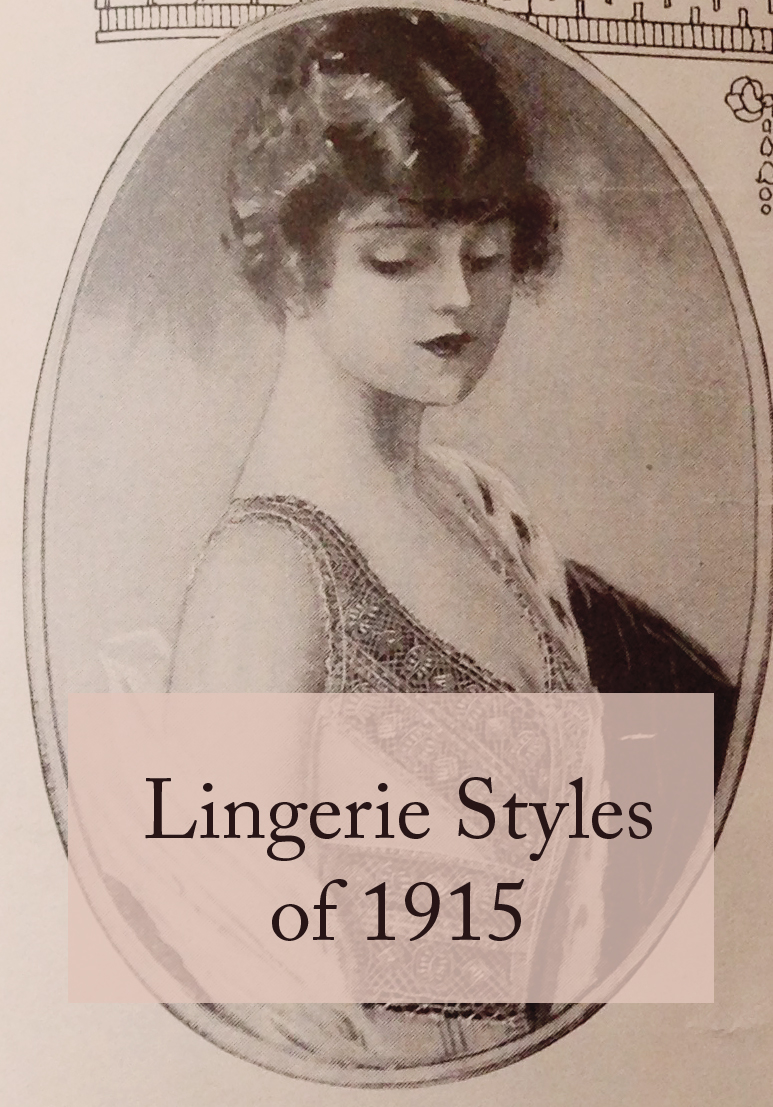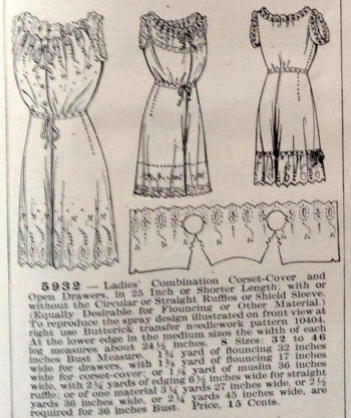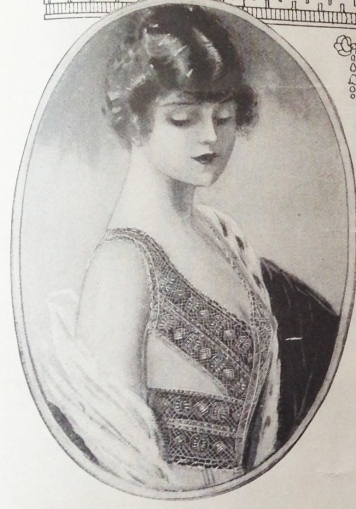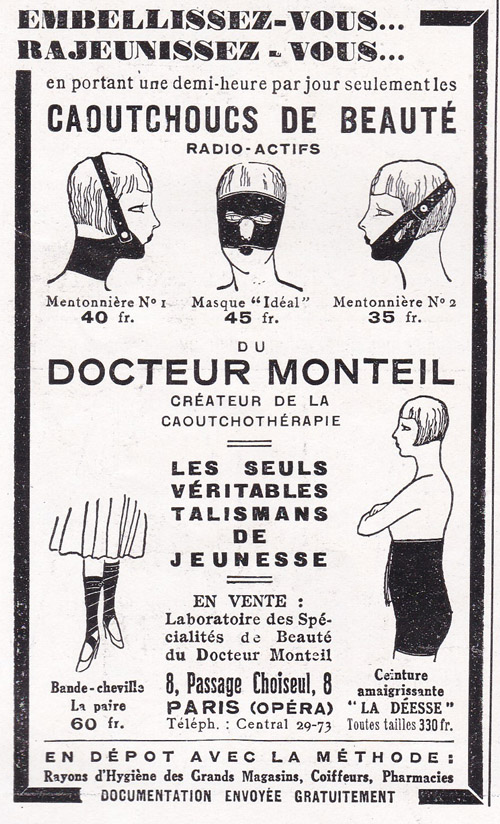Lingerie is always one of my favorite parts of pattern catalogs. The Butterick 1915 pattern catalog I recently let go from my collection had some great examples of the lingerie styles of the era, which included chemises, corset covers, brassieres, drawers, slips, and combinations.
The Brassiere of 1915
This catalog was of particular interest, though, for the brassieres. Every now and then there seems to be a mainstream cultural piece gushing about the 1914 invention of the “brassiere” and the supposed liberation from the oppression of corsets it provided, etc. This narrative defines brassiere in an extremely narrow way, ignoring breast bands that go back to Greece and are depicted in 4th century mosaics, medieval finds from Lengburg Castle dating to the 15th century that resemble modern lingerie design, and the many kinds of bust support patented during the 19th century. The Mary Phelps Jacob patent of 1914 is more of a backless bralette, which is a unique design, but far from the first bra available. (To me, it’s another example of the way that we view our historical predecessors as dramatically different from us or somehow more ignorant, confined by uncomfortable corsetry because propriety demanded it, conveniently ignoring our own modern excesses such as plastic surgery.) As long as women have had fabric, I suspect there have been ways we’ve used it to provide breast support while working or engaging in sports.

In the 1915 Butterick catalog, there are many examples of brassieres and bust support in the form of fitted corset covers. (This contradicts the “the brassiere was invented in 1914” narrative as well, since if it had just been invented a few months before, DeBevoise probably wouldn’t have been mass producing the “brassiere” in the spring of 1915.) There is an ad for DeBevoise brassieres that have the monobosom shape of the 1915 silhouette. These would have been made of mostly nonstretch fabric, and patterns for them have always seemed very plain and utilitarian to me, but I think I may have underestimated the possibilities there. Some of the lace and sheer versions are very pretty, and I’m curious enough about what kind of support they could provide that I might have to give making one of these a try.

There were patterns available from Butterick for similar styles:
The 1915 Corset Silhouette
The brassiere seemed to be gaining momentum as the corset shifted lower to give the straight, thin hipped look that was fashionable then. The brassiere or fitted corset cover would support the bust while the corset gave shaping to the lower torso. There’s a great ad for corsets in the catalog that illustrates the corset style in 1915:

I’ve seen discussions of corsetry that describe this garment as oppressive and claiming that this kind of corset made sitting difficult, but it’s clear from surviving garments from the period and patterns for this type of corset that the boning didn’t extend all the way to the bottom of this type of corset. The boning in most examples I’ve seen stops at the high hip, as a typical higher corset’s bones would. This kind of corset often included elastic panels at the hip, too. I doubt moving or sitting in it would be much different than trying to move or sit in a contemporary girdle or Spanx type control garment.
The Corset Covers, Slips and Chemises of 1915
The corset cover is a type of delicate undershirt that if made to fit closely would have provided bust support, but looser styles could be worn with other foundation pieces like corsets or boned brassieres to smooth the silhouette, too. Corset covers typically ended at the waistline or high hip while chemises usually were full body length.
There are several styles for these kinds of garments in the Butterick catalog:
Drawers of 1915
Panties or knickers as we currently know them don’t seem to have really been a thing yet as of 1915. The lower body styles featured in this pattern catalog are drawers, and they are for *open* drawers, so they were definitely still being worn in this era. For the most part they seem to still be being worn down to the knee as well.
Combination Undergarments
Judging from the amount of patterns offered for combination undergarments, they seem to have been extremely popular in this era. There are also several envelope chemises, which is the closest thing to the closed crotch kind of undergarment we’re used to today:

The combination combined the corset cover or chemise with open drawers:
This simple garment could be somewhat fitted or looser fit, simple and utilitarian or embellished with embroidery and lace, gathered at the neckline or suspended from shoulder straps, gathered and trimmed at the leg or loose.
I think I need to give these a try, too. In a suitable fabric and with a close fit, these would be basically the same thing as a summery jumpsuit, and they’d have a bit of vintage elegance to them. Maybe when I’m not sleep deprived I’ll give them a go. 🙂
I’ll end this screed with just some advertising gorgeousness for its own sake from another brassiere ad. The illustrations of the time are so beautiful.
Happy Sunday! Have you ever worn or sewn undergarments in the style of this era? I’d love to hear your opinions / experiences / general thoughts on vintage styles being done with contemporary styling.




























